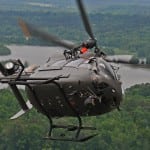
The Army’s process of shifting $33 billion in funds from legacy programs, such as the CH-47 Chinook and Bradley fighting vehicle, to its future weapon system is setting the service up to push from prototyping to procurement for many of its future weapon systems beginning in fiscal year 2023 or the middle of the Future Years Defense Program, a senior official said Wednesday. Under Secretary Ryan McCarthy told attendees at the McAleese Conference the process of putting together the Army’s…

 By
By 











